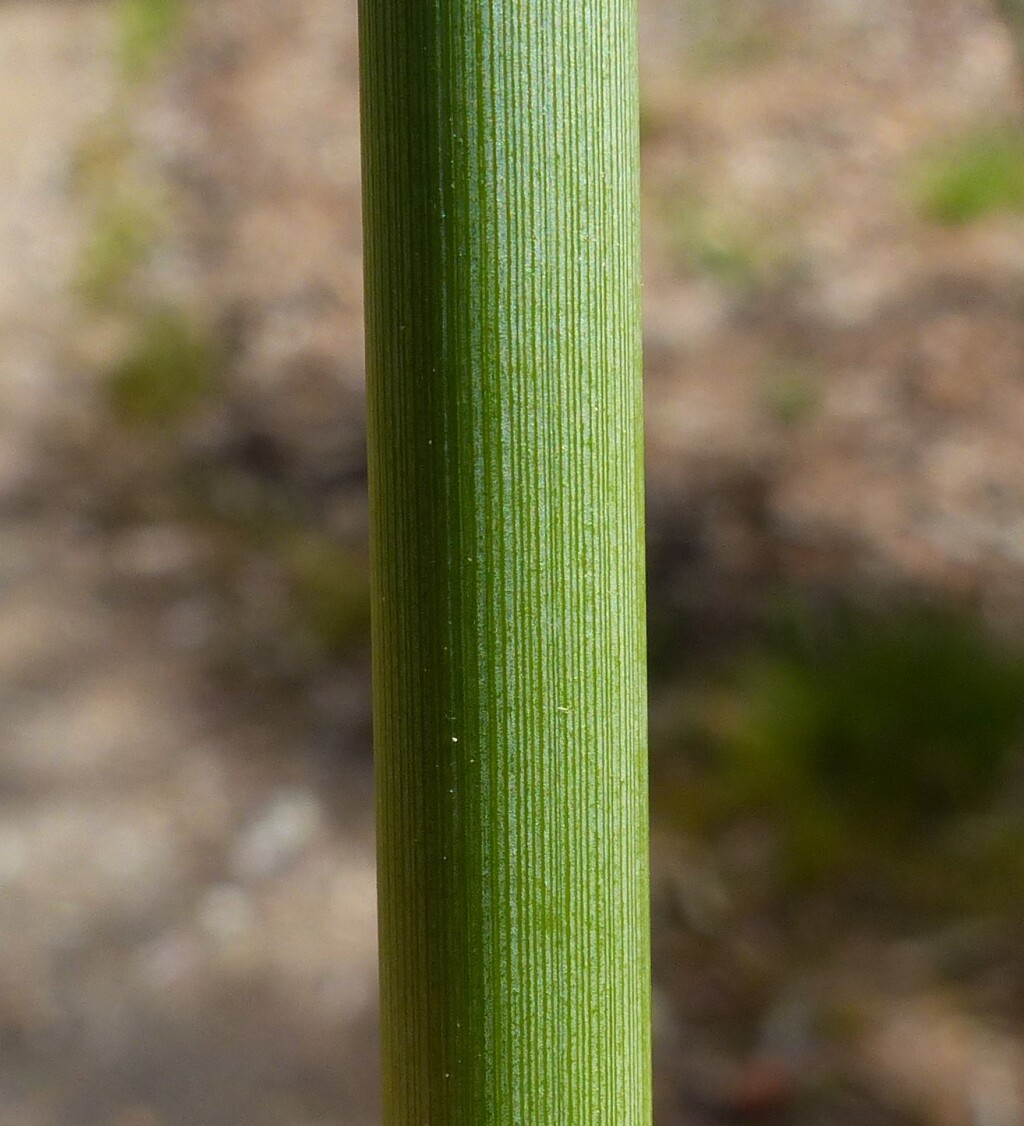Juncus semisolidus
L.A.S.JohnsonTufted robust perennial with horizontal or ascending rhizomes. Cataphylls ± loose, tapering to an acute apex, dark brown, reddish-brown to almost black towards the base, to c. 40 cm long. Culms erect, distinctly glaucous when immature but becoming bluish-green when mature, 90–160 cm high and 3–8.5 mm diam.; striations (60–)70–120, crowded to moderately crowded, not strongly raised; pith interrupted in the upper part and continuous below or occasionally continuous throughout; stomates slightly sunken. Inflorescence large, flowers clustered or occasionally scattered; primary bract continuous with culm, to c. 50 cm long; secondary bract subulate or acuminate, to 50 mm long; prophylls present. Tepals stramineous, 1.7–2.6(–2.8) mm long; stamens 3(–4) anthers c. 0.4–1.0 mm long. Capsules with a stramineous to golden-brown obtuse apex, equal to or exceeding the tepals, 2.0–2.5 mm long. Flowering period not known, seeds shed Dec.–Jan.
Wim, VVP, VRiv, MuF, OtP, Gold, CVU, GGr, DunT, NIS, HSF, HNF. Also NSW. Mostly confined to the north of the Great Dividing Range where occurring on heavy soils, favouring swamps with permanent or semipermanent water (typically dominated by Duma florulenta) and Eucalyptus camaldulensis-dominated woodland along watercourses, uncommon south of the Great Dividing Range (e.g. Laverton and Craigieburn areas). Also colonizes disturbed wet sites such as dam margins and roadside swales.
Juncus semisolidus has been confused with J. procerus and J. pallidus. It is readily distinguished from the former by culm colour and pith, and from the latter in having shorter tepals and capsules, and flowers with only 3 stamens. Hybrids with J. sarophorus and J. amabilis are known.
Albrecht, D.E. (1994). Juncus. In: Walsh, N.G.; Entwisle, T.J., Flora of Victoria Vol. 2, Ferns and Allied Plants, Conifers and Monocotyledons, pp. 197–233. Inkata Press, Melbourne.
 Spinning
Spinning
